
Field Marshal Sam Hormusji Framji Jamshedji Manekshaw MC, also known as Sam Bahadur or Sam the Brave, made an interesting observation when he said, “I have never come across a man who is never afraid. He is either a liar or a Gurkha”.
I beg to differ.

With due respect Sam, (also with no offence meant to the Gurkhas) fear and bravery are two sides of the same coin. They cannot live together. Bravery is not an inborn trait, but rather a quality that can be developed, sharpened and demonstrated through actions.
No man is born brave, but for a few who conquer fear at the right time instead of running away from the situation. Fear is always something to be feared or be afraid of. There are moments when even some of the bravest of brave men start trembling with fear when they see – the shadow of death — close by. On the other hand, there are known cowards who were always afraid. Real bravery is overcoming fear at the right time to save the nation and fellow soldiers. And still, there are others — who are always afraid and experience fear – but suddenly stand up at the last moment to conquer the fear in their heart and mind and end up doing something extraordinary. Something that was never expected of them. That is real bravery.

Real bravery is not being fearless but a conscious decision to face challenges and overcome fear despite the risks or uncertainties involved.
Such men are not born brave; but opt to hurl the fear inside them, out of their hearts and minds or push through at the spur of the moment, often with remarkable results.
Real Bravery is about confronting fear – face to face — at the right time with courage and determination. It is also not limited to grand or heroic acts. There are many examples in daily life when so-called ordinary people who are not even six feet tall have overcome obstacles in their minds to perform extraordinary deeds and achieve unexpected results.
Inspirational Examples
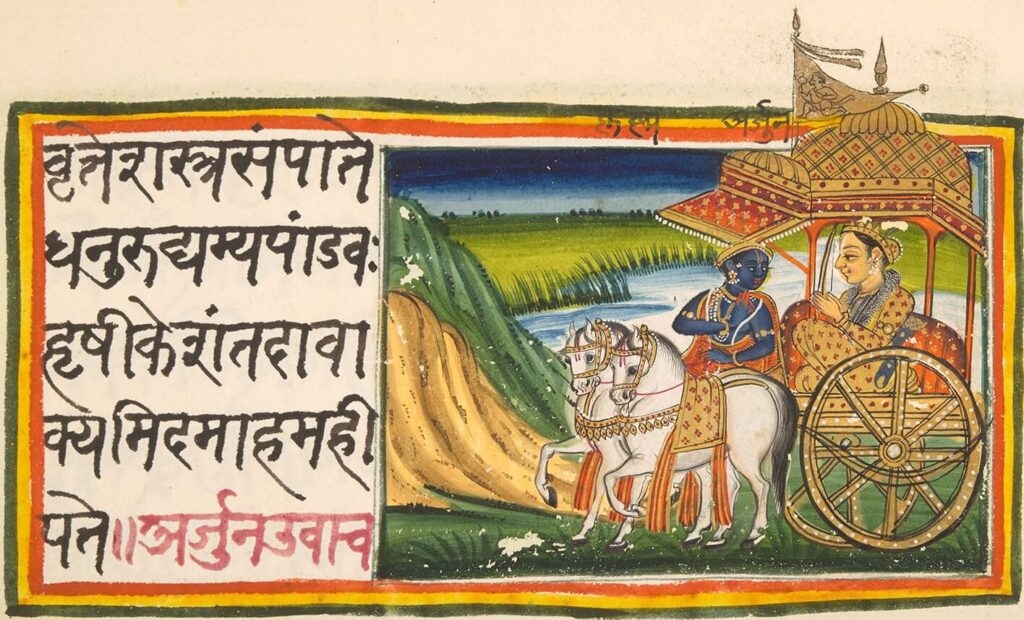
The Bhagavad Gita, offers deep insights into fear, bravery, and the importance of gallant deeds in war and peace. According to the Gita, bravery is not being fearless or the absence of fear, but acting in the face of fear, and performing one’s duty (swadharma) without worrying about the outcome.
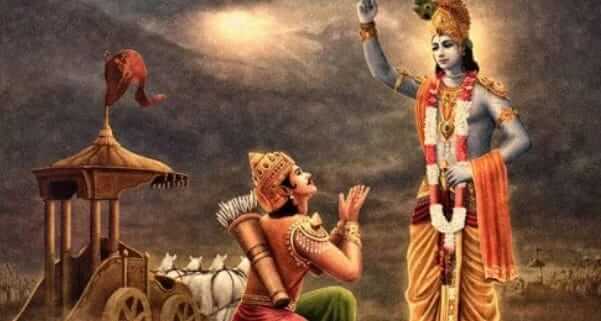
Lord Krishna in Chapter 2, Verse 47 advises Arjuna who is torn between his duty to fight and his personal feelings of compassion and empathy, “You have a right to perform your prescribed duty, but you are not entitled to the fruits of “(your) action.” This verse encourages Arjuna to perform his duties with courage, discipline, and detachment, rather than fear or desire for personal gain. This is the concept of “Nishkama Karma” or selfless action and fighting for a just cause, with a sense of duty and responsibility, rather than for personal gain or glory.
Even other religious scriptures like the Bible and Quran emphasize the importance of bravery, selflessness, and compassion. The Bible preaches standing up for what is right, even if it means facing persecution or danger (Matthew 5:38-42, Luke 6:27-36) while the Quran encourages believers to stand up for justice and righteousness, even in the face of adversity (Quran 4:135).
Gallantry Awards in India
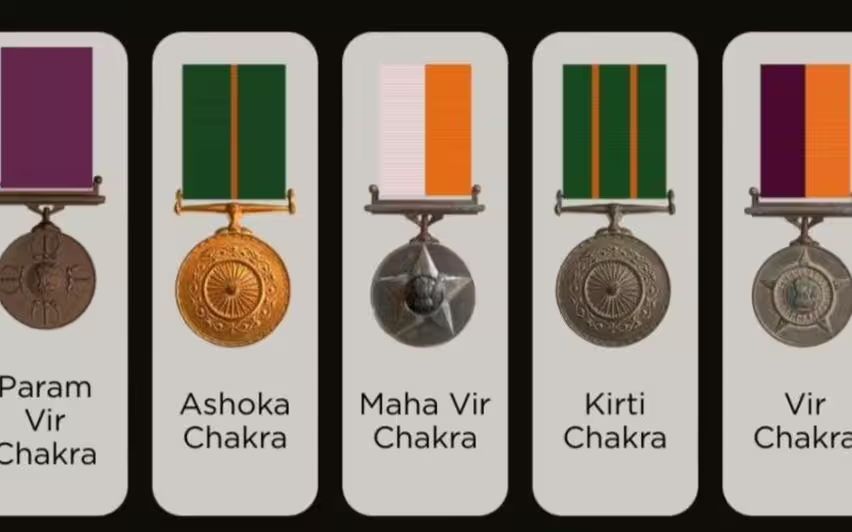
Gallantry deeds are extraordinary acts of bravery, sacrifice, and patriotism that inspire and motivate others and boost the morale of soldiers, civilians, and the nation in war and peace. A person who overcomes fear – is called bold or courageous and is recognised as a hero or martyr – who lives in the pages of history – much beyond his lifetime.
India has a rich tradition of awards and decorations to recognise and honour selfless gallant deeds and extraordinary courage in the face of danger. Some such gallantry awards include:
Wartime Gallantry Awards

Param Vir Chakra (PVC): The highest military decoration for the most conspicuous bravery, valour or self-sacrifice in the presence of the enemy.
Maha Vir Chakra (MVC): The second-highest military decoration for acts of conspicuous gallantry in the presence of the enemy.
Vir Chakra (VrC): The third-highest military decoration for acts of gallantry in the presence of the enemy.
Peacetime Gallantry Awards

Ashok Chakra (AC): The highest peacetime military decoration awarded for the most conspicuous act of bravery, daring, valour, self-sacrifice and distinguished service
Kirti Chakra (KC): The second-highest peacetime military decoration for conspicuous gallantry
Shaurya Chakra (SC): The third-highest peacetime military decoration for gallantry
Other Gallantry Awards
Sena Medal: Awarded to army personnel for gallantry.
Nau Sena Medal: Awarded to naval personnel for gallantry.
Vayu Sena Medal: Awarded to air force personnel for gallantry.
These awards are announced twice a year, on Republic Day and Independence Day.
Throughout history, there are countless examples of soldiers who have risked their lives to save their comrades and performed acts of bravery in the face of adversity.
Nb Sub Chuni Lal AC VrC SM: the most decorated of the Indian Army

One such example is Nb Sub Chuni Lal, AC, VrC, SM from the 8th battalion of J&K Light Infantry – the first and most decorated soldier of the Indian Army — who has been awarded all three gallantry medals – the Sena Medal, Vir Chakra and Ashok Chakra.
The Ashok Chakra is the highest gallantry award in peacetime, while the Vir Chakra is a wartime bravery medal for gallant acts on the battlefield, and the Sena Medal is generally awarded for individual acts of exceptional devotion to duty or courage that have special significance for the Army.

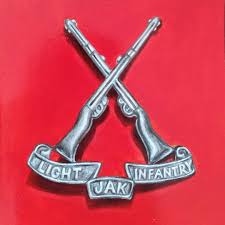
Born on March 6, 1968, in Bhaderwah, Jammu and Kashmir, Chuni Lal joined the 8th battalion of the Jammu and Kashmir Light Infantry (8 JAK LI) the most decorated regiment of the Indian army at the age of 16 in 1984. The regiment was formed in 1947 as a paramilitary force under the Indian Ministry of Home Affairs in response to the Pakistani invasion of Kashmir during the first war after independence in October 1947 and initially operated mainly on the Line of Control. The regiment had a sizable percentage of Muslim officers and soldiers mostly from Jammu, Poonch, Rajouri, Doda, Leh, and Nubra Valley who had a deep understanding of the local terrain and culture. In 1972 the J&K LI was converted to a full-fledged Infantry regiment of the Indian Army under the Ministry of Defence. The regiment has since then participated in the Siachen Conflict, Operation Meghdoot, and Operation “VIJAY” (Kargil 1999) and received several battle honours, unit citations, and commendations for its bravery and effectiveness in combat.
During the Kargil war in 1999, the Jammu and Kashmir Light Infantry as well as other Himalayan regiments like Garhwal Rifles, Gurkha Rifles, Ladakh Scouts, and Naga Regiment along with regular infantry soldiers from Sikh, Rajasthan, Mahar, and Bihar regiments displayed exemplary valour and grit in the face of the enemy.
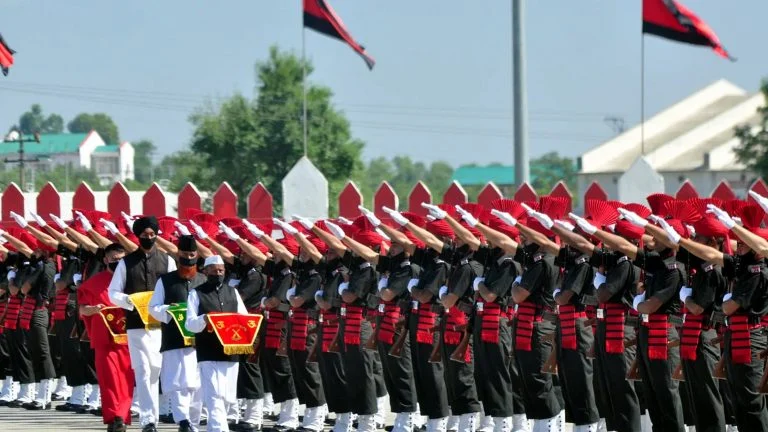
The motto of the regiment is Balidanam Vir Lakshanam, or Sacrifice is the hallmark of bravery. In other words, it means that true bravery is not just physical courage, but also willingness to put oneself in harm’s way for the greater good.
Curiously one of the first persons that Chuni Lal came across almost as soon as he joined 8 JAK Li was now Bana Singh who went on to receive Param Vir Chakra, the nation’s highest gallantry award. Though Bana Singh was 20 years older and belonged to Kadyal, Jammu and Kashmir, Chuni Lal developed a liking for him as a mentor.
Operation Meghdoot: Bana Singh, and Chuni Lal’s moment of glory (1987)
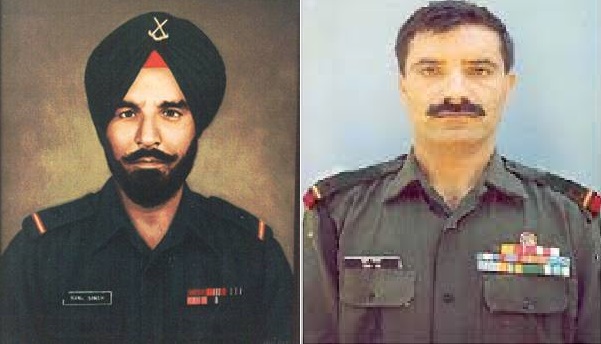
The Indian Army launched Operation Meghdoot, a military operation on April 13, 1984, to capture the Siachen Glacier in 1984. Operation Meghdoot (name derived from the Sanskrit word “Meghdoot,” meaning “cloud messenger”) was a success as the Indian Army managed to control the Siachen glacier and prevent Pakistan from gaining the upper hand. This also marked the beginning of a prolonged military standoff between India and Pakistan in the Siachen Glacier, which became the highest battlefield in the world over 20,000 feet above sea level.
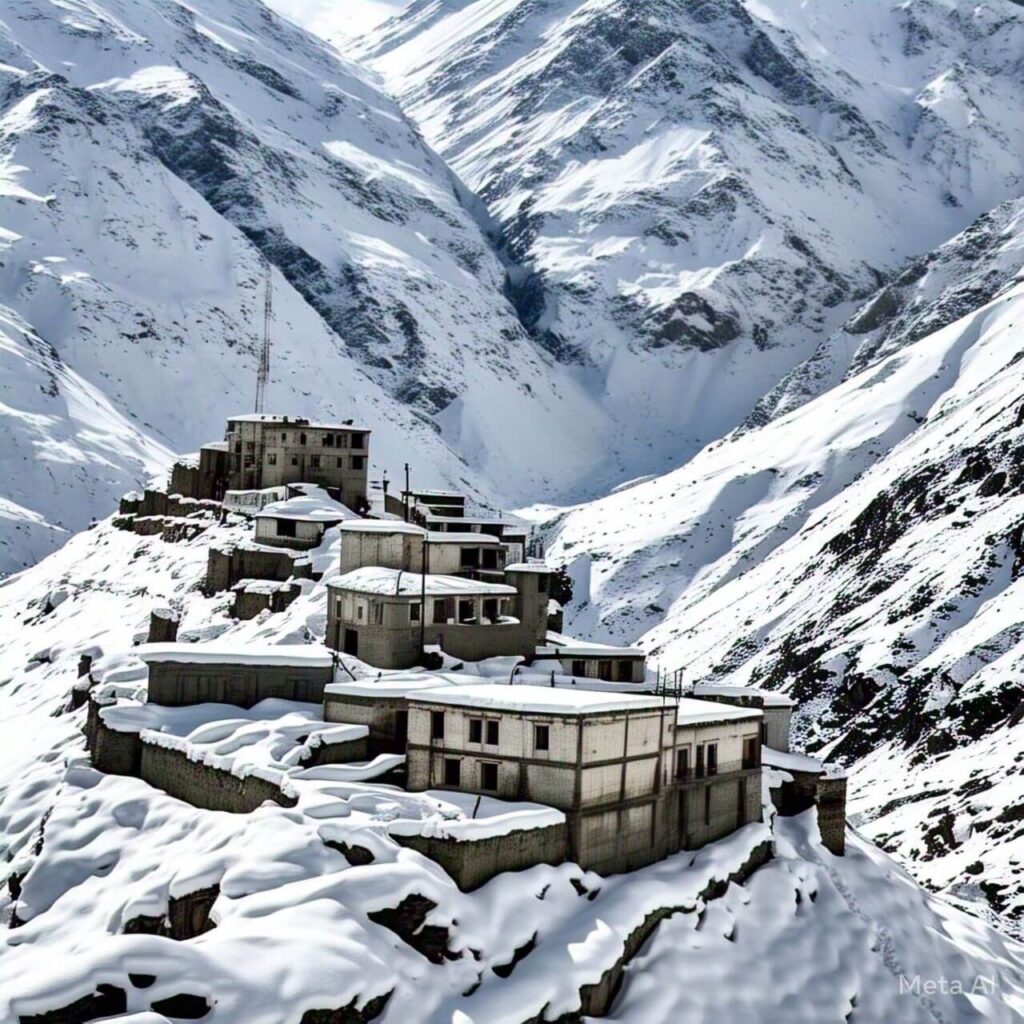
June 26, 1987, was a pivotal moment in Indian military history when 8 JAK LI led by Bana Singh and his team including Chuni Lal captured Bari Post, a Pakistani post on the Siachen Glacier. Bari – a term in the local language that means “high” or “elevated”. The name also symbolised the challenging nature of the mission and terrain. The post located at an altitude of 21,153 feet was also called Quaid Post [named after Quaid-e-Azam (“Great Leader”) and Baba-e-Qaum (“Father of the Nation”) Muhammad Ali Jinnah- the founder of Pakistan]. Hence it was a very challenging and high-priority task. But virtually impregnable because of 1,500-foot-high ice walls and harsh weather conditions. The enemy post was a glacier fortress with ice walls, 457 metres high, on either side.

The highly secret military operation conducted by the Indian Army to capture the Quaid Post, a strategic Pakistani post along the Actual Ground Position Line (AGPL) on the Siachen Glacier was called Operation Rajiv. Operation Rajiv was not named after Rajiv Gandhi but in honour of Second Lieutenant Rajiv Pande who was killed in a failed attempt to capture the Quaid Post on May 29, 1987. Pande as the leader of a 13-member patrol was tasked to identify the best route to climb up to the Quaid Post and mark it with ropes. Unfortunately, they were detected by the Pakistani soldiers who opened a heavy machine gun fire in which 10 Indian soldiers including Pande lost their lives. Exactly one month later Bana Singh led a successful operation to capture the Quaid Post. Chuni Lal volunteered to go along and evict the Pakistani infiltrators from the area. Their efforts bore fruit as Quaid post was captured. It was subsequently called Bana Top after Bana Singh, who led the successful final assault.
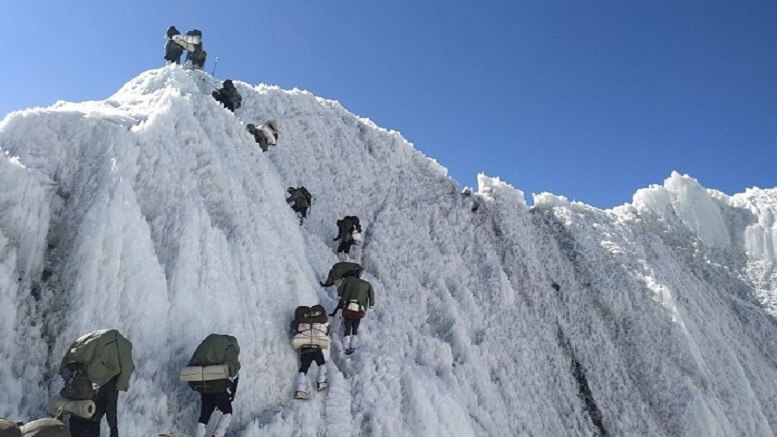
On June 26, 1987, Bana Singh, Chuni Lal and other members of 8 JAK Li embarked on a dangerous mission to capture the Quaid Post. The team climbed for hours using makeshift ropes and ladders to reach the post, navigating through treacherous ice walls, while avoiding enemy fire and crevasses. Upon reaching the post, the team engaged in fierce hand-to-hand combat with the Pakistani soldiers. Despite being outnumbered, Bana Singh and his team fought valiantly, using their mountaineering skills and combat training to overcome the enemy. Chuni Lal played a crucial role in the battle, providing cover fire and helping to neutralise the enemy. Chuni Lal managed to single-handedly shoot down two attackers and was instrumental in the elimination of twelve Pakistani soldiers.

After an intense battle, Bana Singh and his team managed to capture the post and control the Siachen Glacier. This was a significant moment in the Indian Army’s history. Bana Singh was awarded Param Vir Chakra (PVC) the highest military medal for conspicuous bravery, while Chuni Lal, his teammate from 8 JAK Li was awarded Sena Medal (Gallantry)for his acts of bravery during “Operation Rajiv”. This recognition set the tone and tenor for his future endeavours as a trained, highly disciplined and brave soldier.
Operation Rakshak: Vir Chakra for anti-terrorist operations (1999)
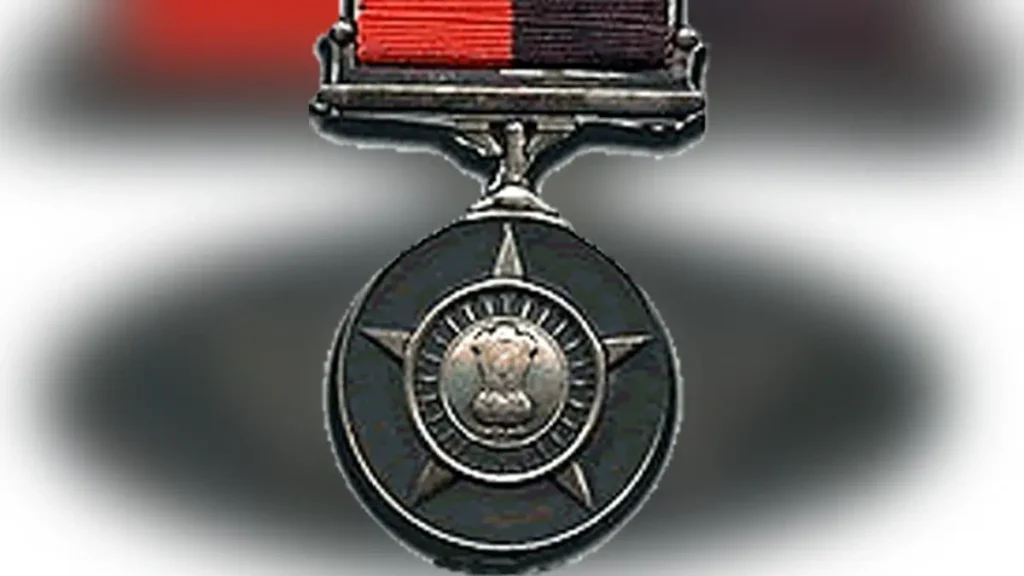
About nearly 12 years after his stint in Siachen, Chuni Lal was posted in Jammu and Kashmir where he displayed exceptional courage in various anti-terrorist operations against the militants and the Pakistani army which was supporting the terrorists with funds, arms, ammunition, training, and logistics.
Chuni Lal fought tooth and nail to thwart an intrusion attempt by the Pakistan Army in the Jammu and Kashmir’s Poonch sector in 1999, where he killed at least 12 intruders from Pakistan and saved a crucial post from being captured by the enemy. He was awarded Vir Chakra, a prestigious gallantry award for this act of bravery.
Kupwara Operation: Ashok Chakra, the nation’s highest peace-time gallantry award (2007)
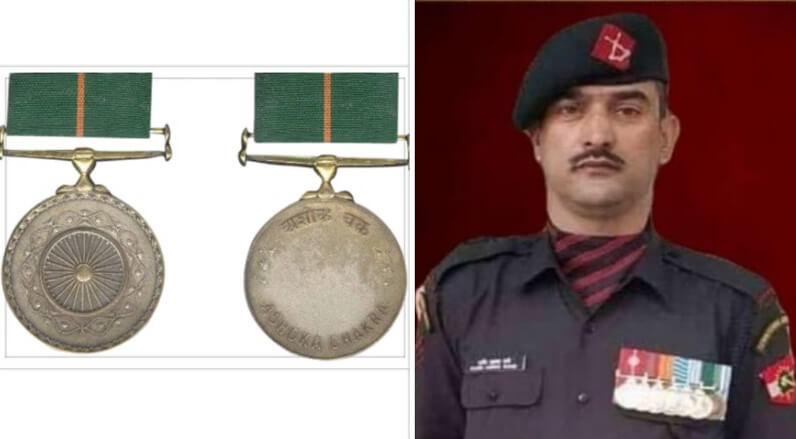
Ironic but that’s destiny. Nb Sub Chuni Lal was promoted to Nb Sub on 21 June 2007 (seniority from 1 June) and given charge of a post in Kupwara, Jammu and Kashmir. But was killed in action while fighting the infiltrators from Pakistan only three days later on 24 June 2007.
Early in the morning at around 3.30 am on 24 June 2007, Nb Sub Chuni Lal and his troops were manning the forward post along the LoC at a height of 4,500 meters in minus 3- 5 degree temperature. The visibility was quite low. Still, Nb Sub Chuni Lal and his team sensed unusual movement near the post and could make out that some terrorists from Pakistan were trying to infiltrate so they decided to probe further.
The terrorists opened fire on Nb SubChuni Lal’s troops upon being challenged. This led to a fierce exchange of fire that continued for more than an hour. Nb Sub Chuni Lal and his soldiers surrounded the area and plugged all escape routes. But two soldiers in his team got injured in the gun battle. Without bothering about his personal safety Nb Sub Chuni Lal crawled towards them and dragged them to safety. In the process, Nb Sub Chuni Lal also managed to kill three terrorists. However, in the exchange fire, one of the infiltrators managed to split open Chunni Lal’s abdomen and started losing blood after being hit by the enemy’s bullets. But before being killed in action fighting the infiltrators from Pakistan he took cover behind a rock and inspired his men to kill the remaining two terrorists.
Nb SubChuni Lal’s act of great bravery, leadership and supreme sacrifice helped eliminate the Pakistani terrorists and also saved the lives of the soldiers under his command. His actions that day earned him the Ashok Chakra, the nation’s highest peacetime gallantry award (posthumously). Chuni Lal’s wife, Chinta Devi, received the Ashok Chakra on his behalf from Pratibha Patil, the 12th President of India on August 15, 2007.
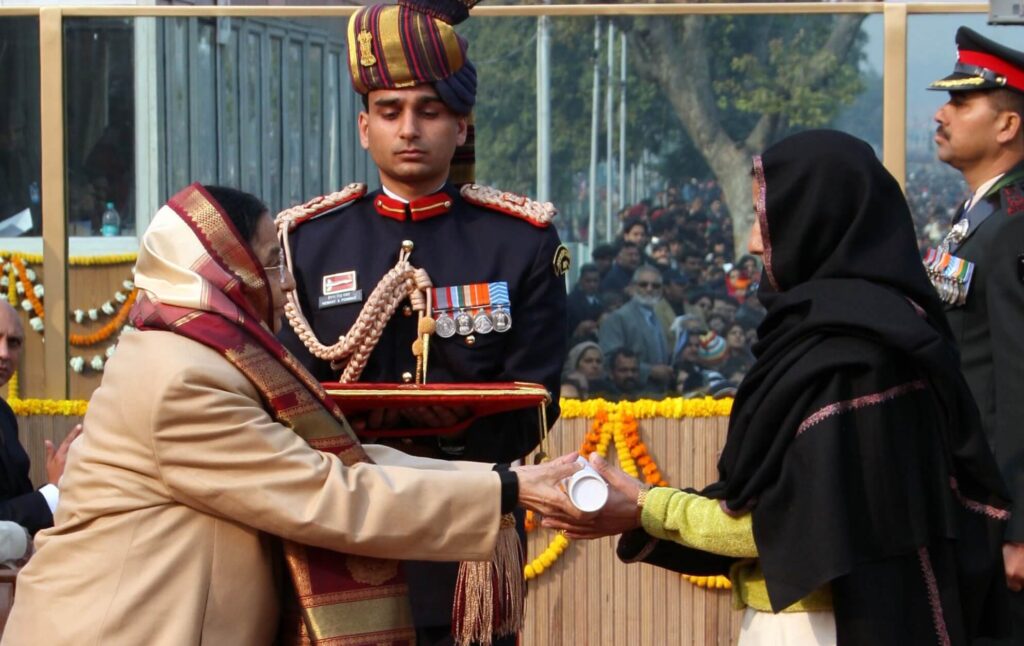
As we said real bravery is overcoming fear at the right time to save the nation and fellow soldiers. Nb Sub Chuni Lal’s story reminds us that true bravery is not about being fearless, but about facing our fears head-on to protect others. Like a true soldier Nb Sub Chuni Lal fought for the nation, regiment, and fellow soldiers – without bothering about his safety or worrying about what might happen to his family, if and when he was no more.
Nb Sub Chuni Lal died a hero’s death – bleeding profusely and shedding the last ounce of blood in his body on the battlefield- before he could be evacuated to the nearest military hospital by helicopter. He will be cremated with full military honours. He and other soldiers like him – are people who make India proud. And inspire and motivate the present and future generations of soldiers to do so, too. Nb Sub Chuni Lal’s unflinching courage and supreme sacrifice are proof that the values of bravery, valour and patriotism are highly contagious – and spread far and wide.

Nb Sub Chuni Lal’s gallant deeds and the journey from the 1st day as a raw recruit in 8 JAK Li to his last operation are mentioned in former 15 Corps Commander Lt Gen Satish Dua’s book ‘Bravest of the Brave’.
He was survived by his wife Chinta Devi and two children – a 16-year-old son Manveer and daughter Subhadra. His son Manveer Singh aspires to join the army as an officer to make his father proud.
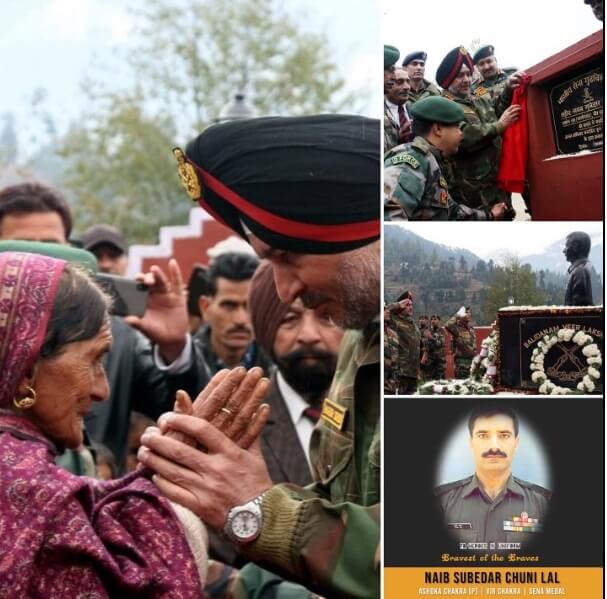
Chuni Lal’s legacy extends beyond his medals and awards. His unflinching courage and supreme sacrifice are an inspiration for all soldiers and civilians but no award, medal or citation can compensate the family for his absence.


